How to Make Sauerkraut
Welcome to the world of fermentation, one of the lost culinary techniques that’s becoming popular again. This ancient process uses only salt (and sometimes water) to alter the flavor and texture of foods. Here, a humble head of cabbage becomes tangy, zesty, effervescent sauerkraut.
by John Kirkpatrick and Pamela Killeen
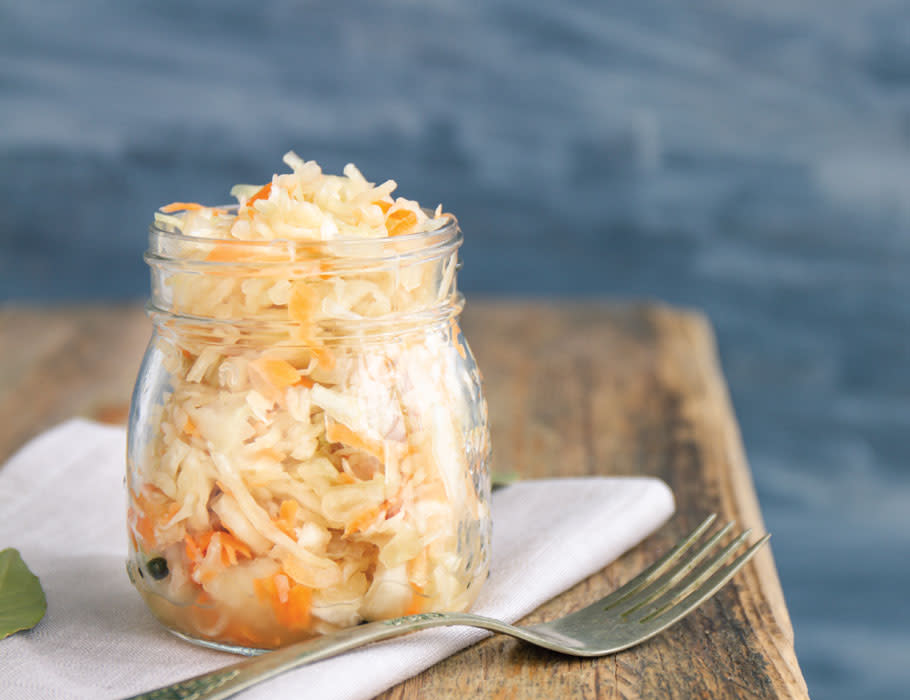
Photo: Getty Images
(Note: This post contains affiliate links. As an Amazon Associate, we earn from qualifying purchases made through affiliate links.)
SAUERKRAUT is probably the most well known lacto-fermented vegetable, thus it was an obvious choice for our foray into the world of fermentation. Plus, kraut is a natural topper for brats. (See our recipe for homemade Classic Bratwurst.)
But let’s take a step back and answer the questions — what are fermentation, and lactofermentation, specifically? Fermentation is a preserving method. It’s defined as the break down of a substance (in this case cabbage) by bacteria, yeasts, or other microorganisms typically involving effervescence and temperature. Lactofermentation is named due to the type of bacteria, Lactobacillus, that’s naturally present on the surface of plants (and in milk, etc.), especially those that grow close to the ground, like cabbage. Lactobacillus have the ability to convert sugars into lactic acid, which is a natural preservative that inhibits the growth of harmful bacteria. In addition to preservation, lacto-fermentation also increases or preserves the vitamin or enzyme levels as well as digestibility of the fermented food. With this brief primer on fermentation, let’s focus on making sauerkraut.
Kraut basics: What is Fermentation and How Do you Do it?
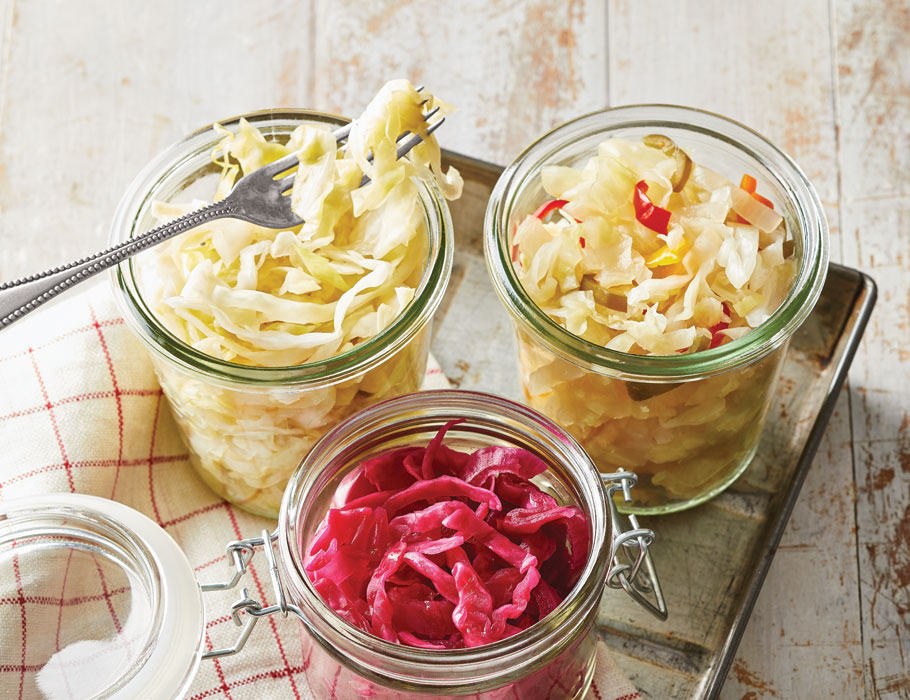 Fermenting cabbage to make sauerkraut uses a process called “dry salting,” which basically allows the cabbage to create its own brine. Shredding and salting the cabbage expedites and encourages the key fermenting lactic-acid bacteria. The saline environment inhibits harmful bacteria, suspends decay, and hardens pectin to keep fermented or pickled vegetables crisp.
Fermenting cabbage to make sauerkraut uses a process called “dry salting,” which basically allows the cabbage to create its own brine. Shredding and salting the cabbage expedites and encourages the key fermenting lactic-acid bacteria. The saline environment inhibits harmful bacteria, suspends decay, and hardens pectin to keep fermented or pickled vegetables crisp.
Fermentation creates CO2 and oxygen. Removing oxygen and keeping the cabbage submerged in the brine is critical. Remember, when you go to burp the container, press on the weight to expel the oxygen that has built up in the nooks and crannies. The brine will replace the bubbles and keep the kraut environment anaerobic, or alive without oxygen.
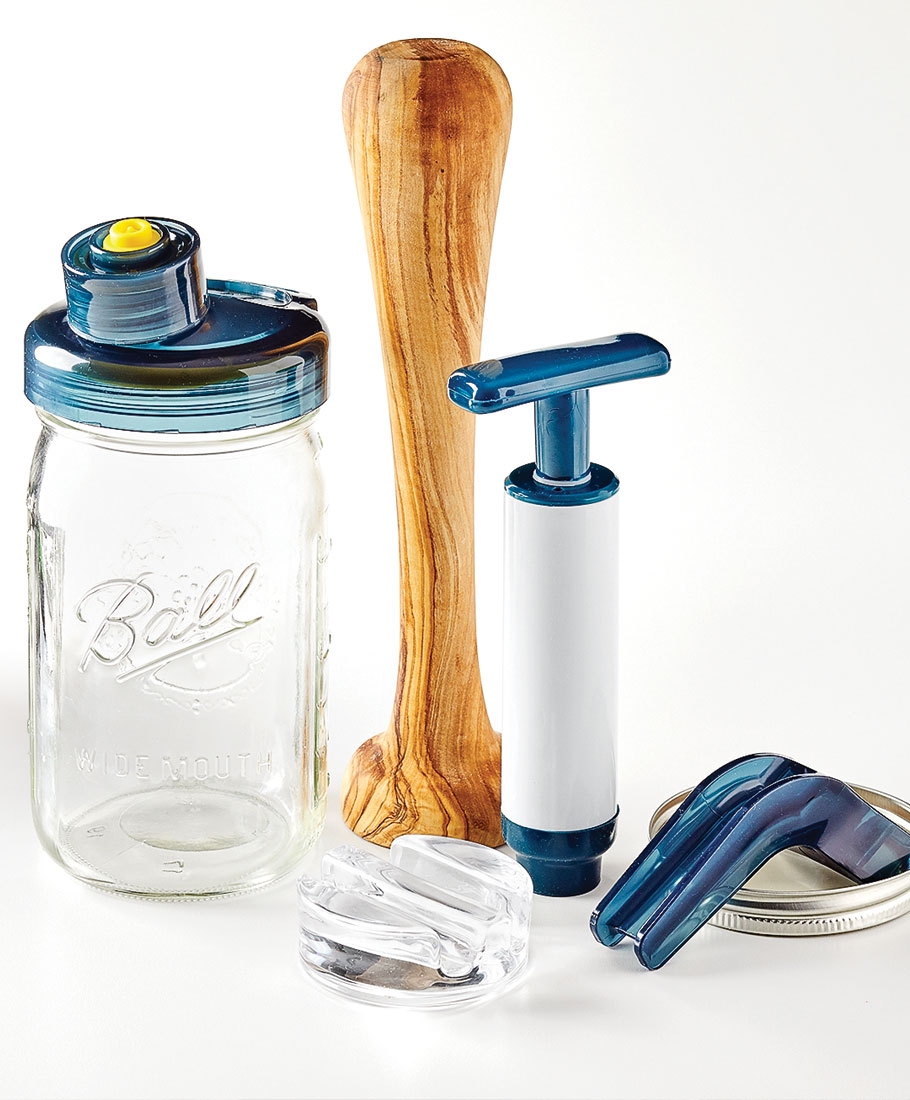 Nourished Essentials carries My Mason Makes fermenting kits, wooden crushers, and glass weights.
Nourished Essentials carries My Mason Makes fermenting kits, wooden crushers, and glass weights.
Simple Steps to quality kraut
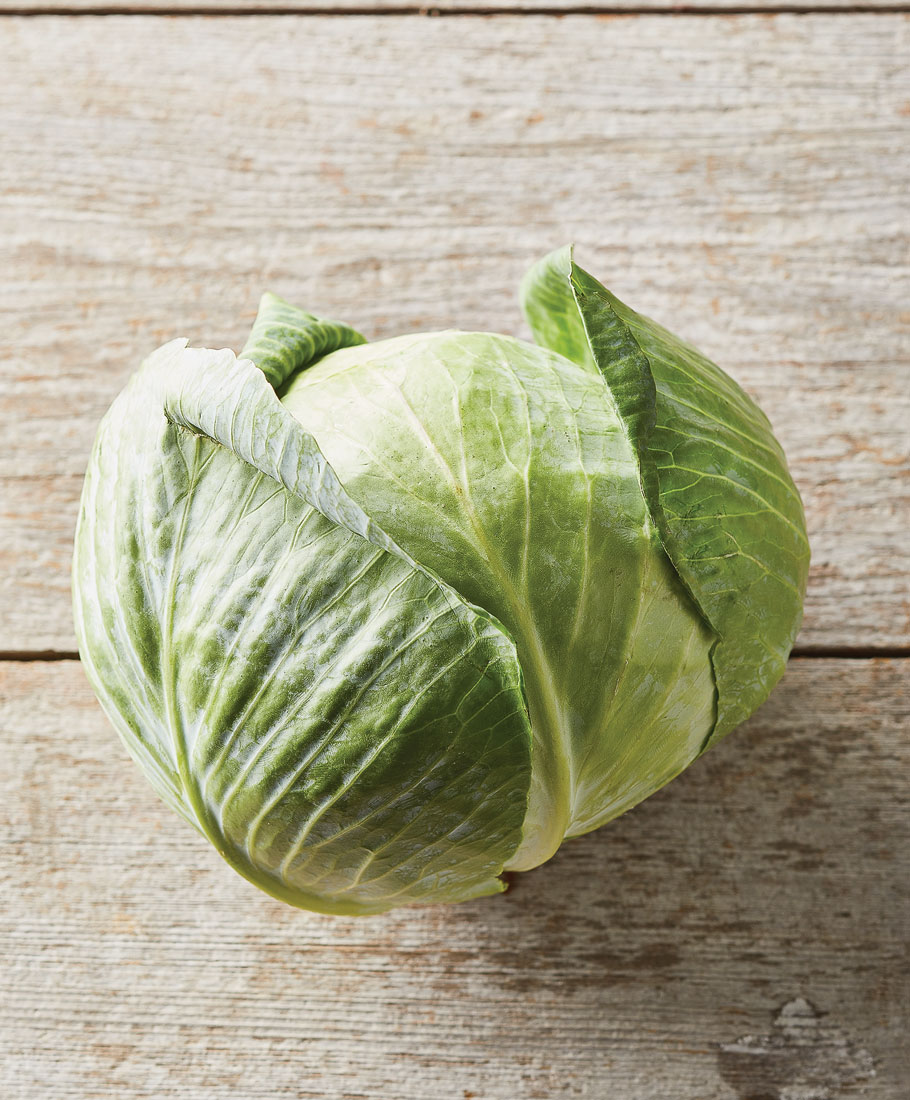 1. Before shredding the cabbage, remove any bruised, yellowed, or discolored leaves. Cut the cabbage into quarters, then cut out the core before shredding.
1. Before shredding the cabbage, remove any bruised, yellowed, or discolored leaves. Cut the cabbage into quarters, then cut out the core before shredding.
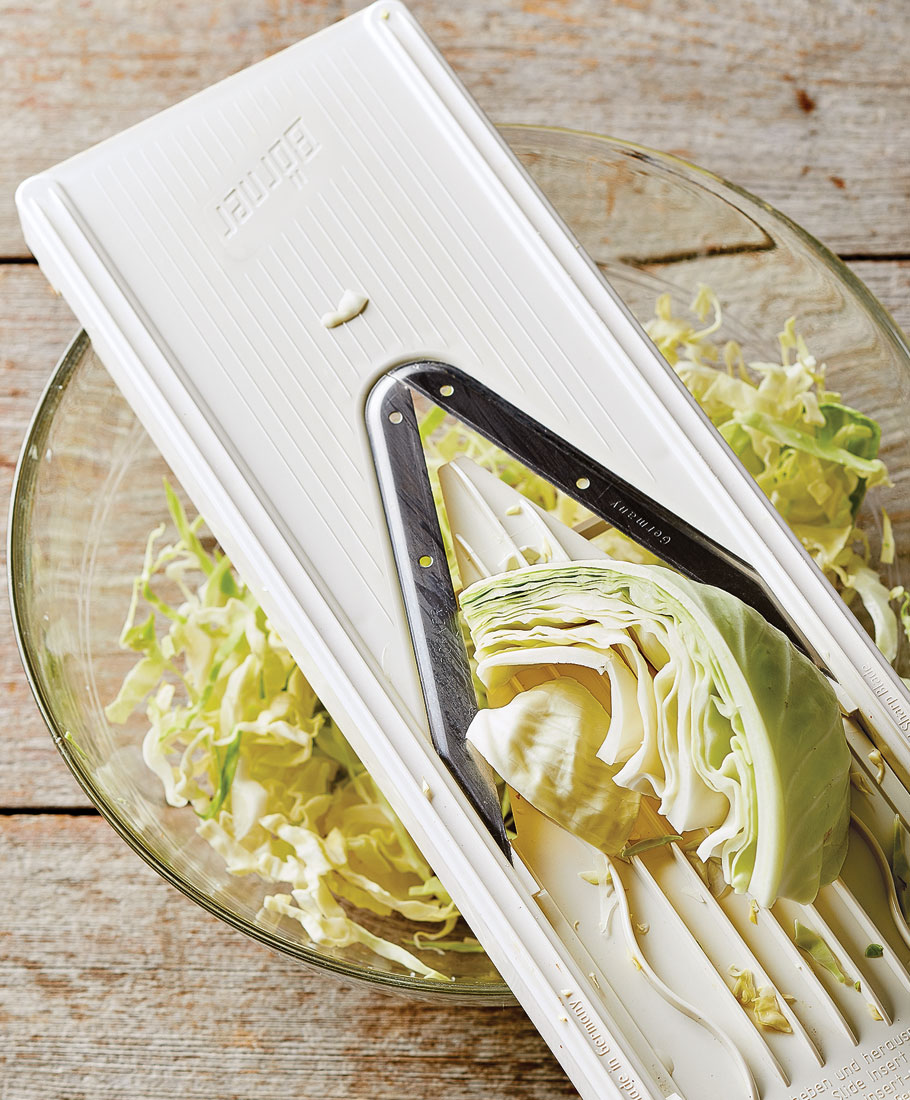 2. Shred cabbage with a mandoline or a chef's knife. Rinse the cabbage in a colander to remove any dirt from the leaves, then drain and transfer to a mixing bowl.
2. Shred cabbage with a mandoline or a chef's knife. Rinse the cabbage in a colander to remove any dirt from the leaves, then drain and transfer to a mixing bowl.
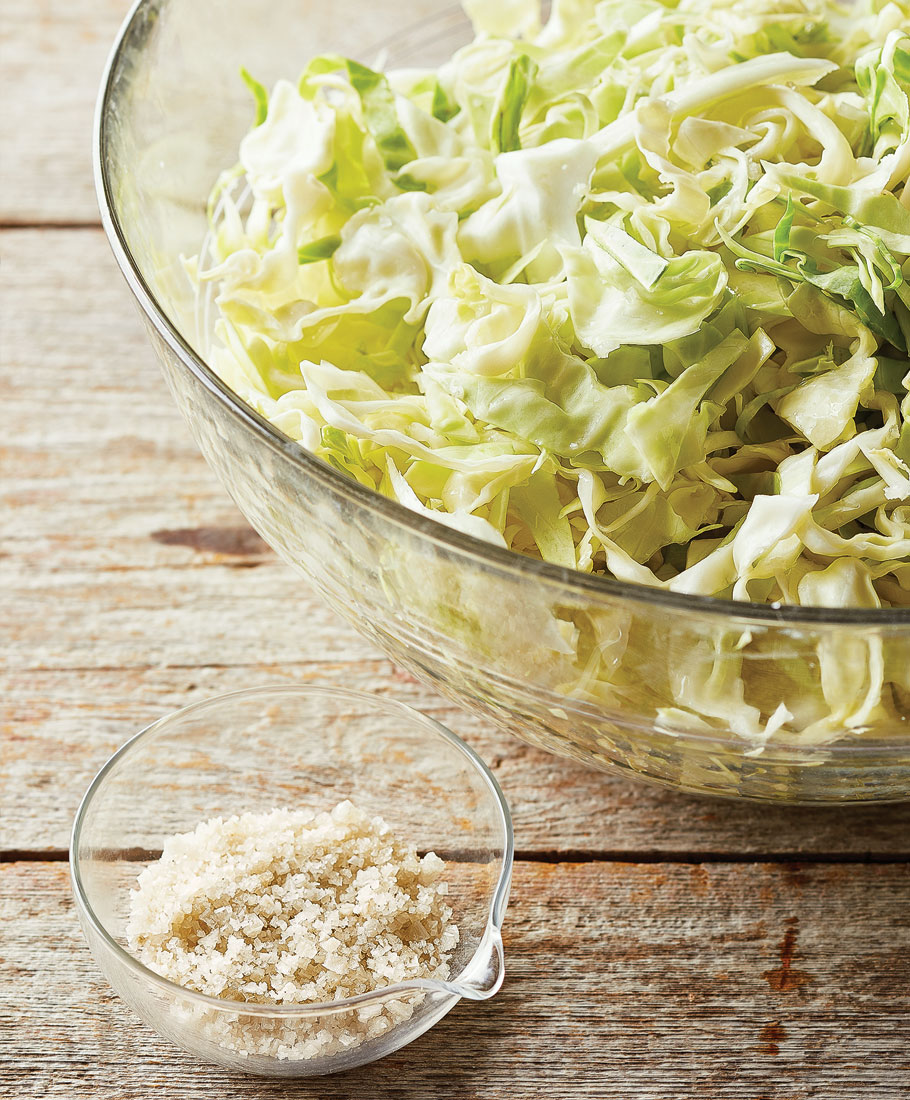 3. Salt the cabbage and toss it well in the bowl; let stand one hour. There should be some liquid released at the bottom of the bowl — if not, continue to let stand until you see some accumulating.
3. Salt the cabbage and toss it well in the bowl; let stand one hour. There should be some liquid released at the bottom of the bowl — if not, continue to let stand until you see some accumulating.
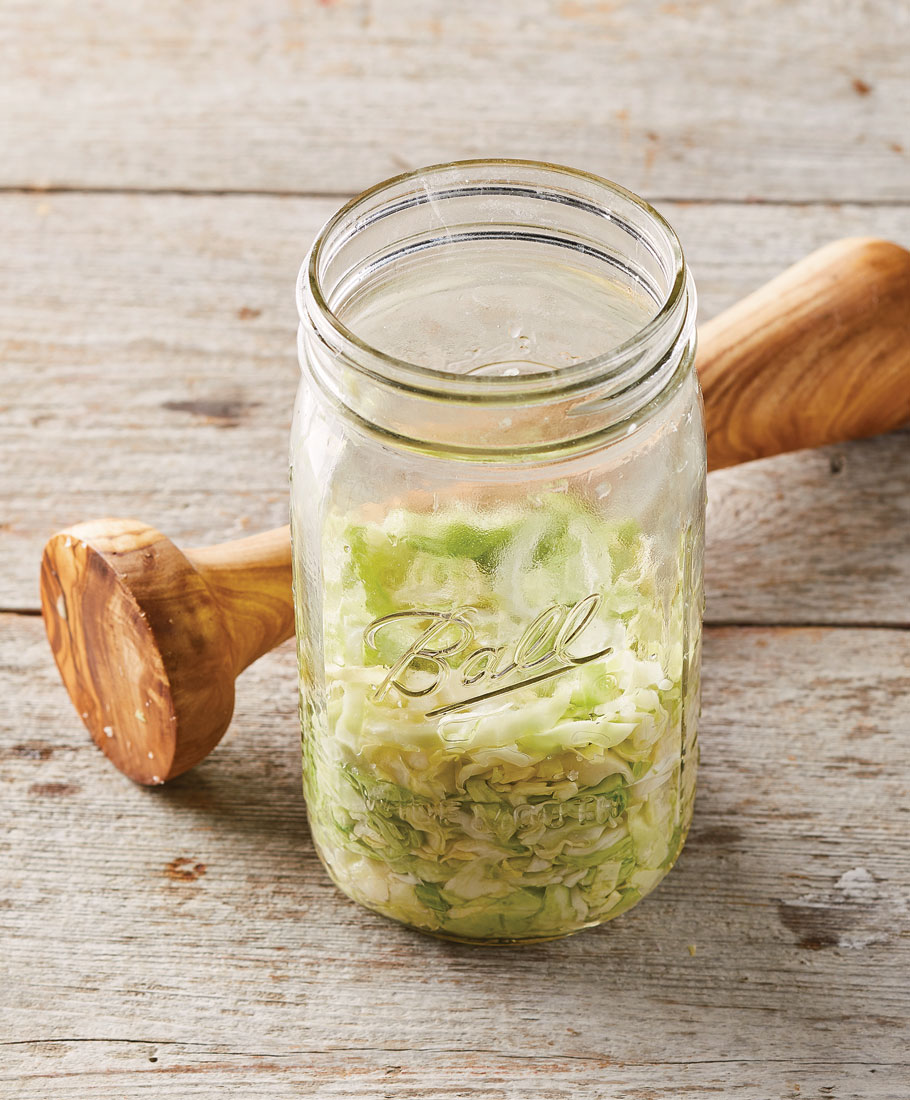 4. Pound cabbage into the canning jar after each (3–4 inch) addition, in order to compress the cabbage and release more liquid. Use a kraut crusher, cocktail muddler, rolling pin, or wooden spoon to pound it.
4. Pound cabbage into the canning jar after each (3–4 inch) addition, in order to compress the cabbage and release more liquid. Use a kraut crusher, cocktail muddler, rolling pin, or wooden spoon to pound it.
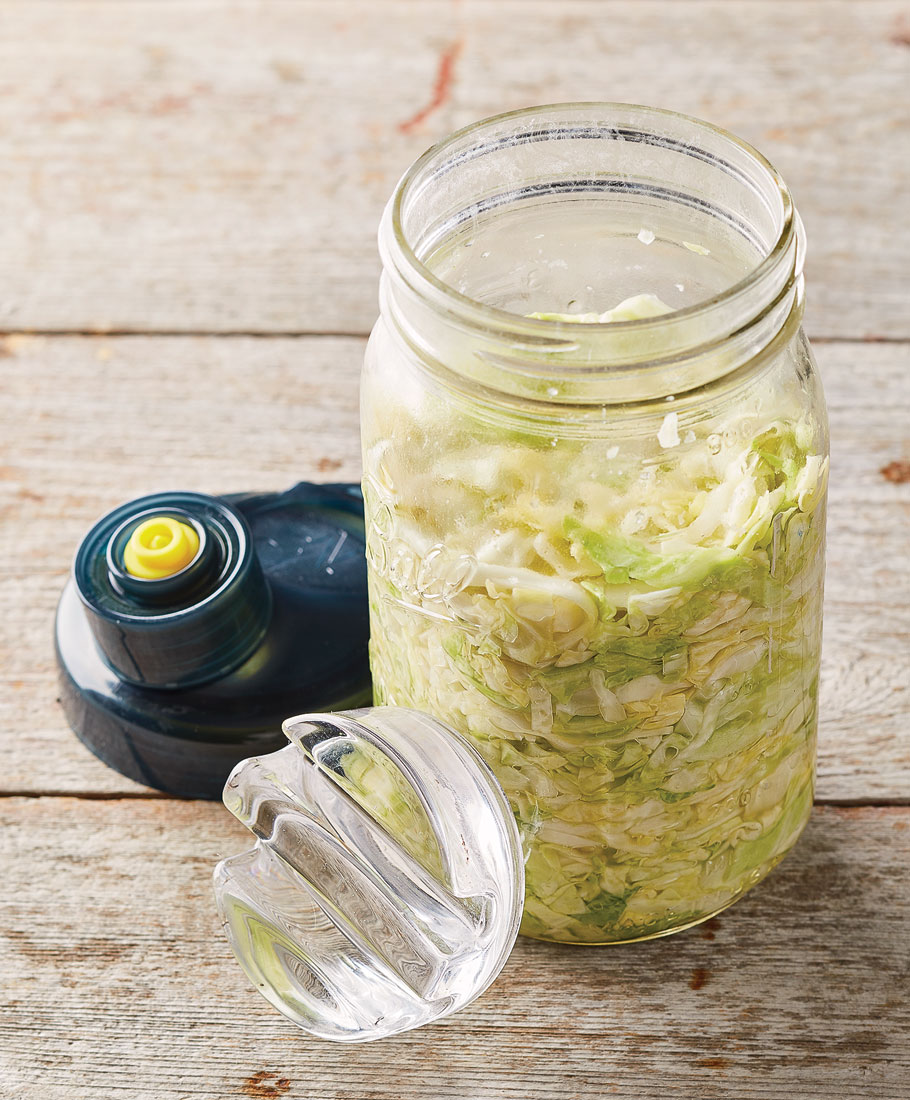 5. Allow a few inches of headroom, then top cabbage with a weight to keep the cabbage compressed and submerged in brine. A sanitized paper weight, a sanitized 2 oz. jar filled with water, or a sanitized rock works if you don’t have a fermentation glass weight.
5. Allow a few inches of headroom, then top cabbage with a weight to keep the cabbage compressed and submerged in brine. A sanitized paper weight, a sanitized 2 oz. jar filled with water, or a sanitized rock works if you don’t have a fermentation glass weight.
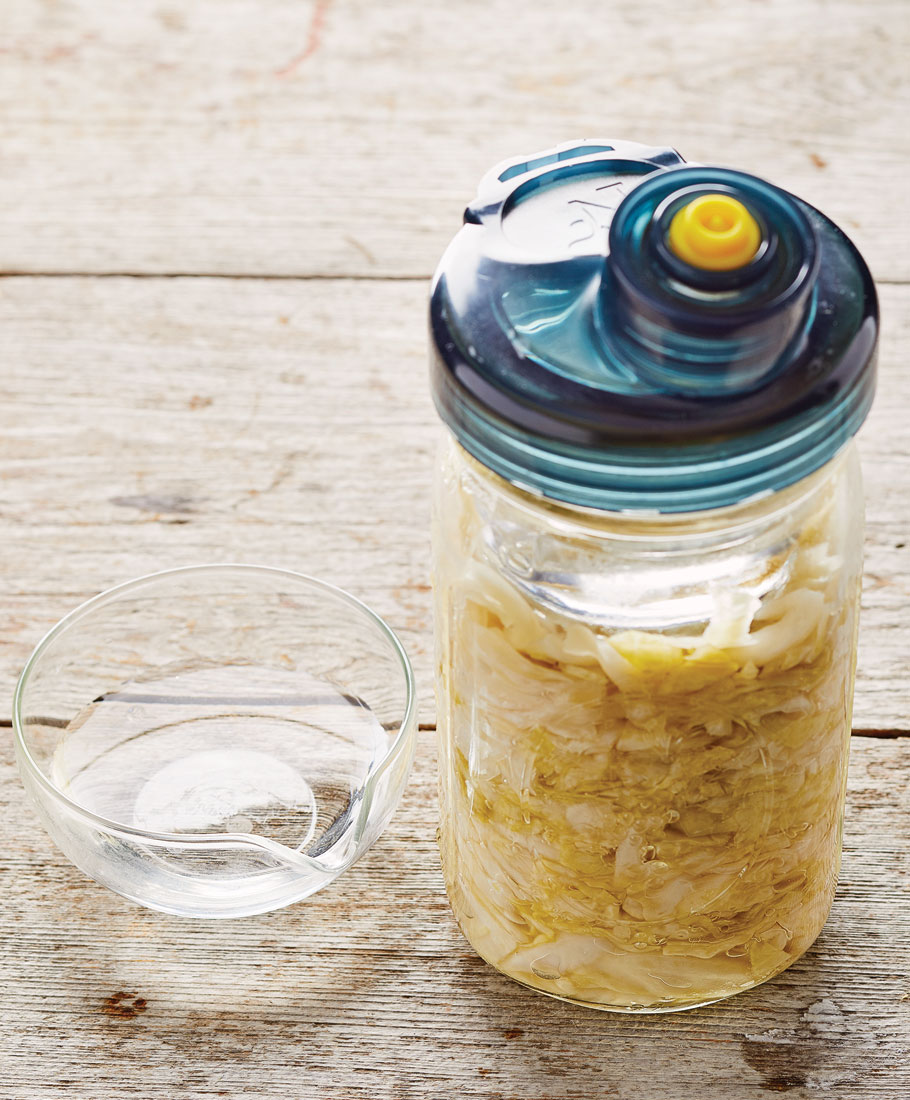 6. Add more lightly salted water to just cover the cabbage if enough water hasn’t released after wilting and pounding. As the cabbage ferments it will naturally get covered in the cabbage brine.
6. Add more lightly salted water to just cover the cabbage if enough water hasn’t released after wilting and pounding. As the cabbage ferments it will naturally get covered in the cabbage brine.
During the fermenting process you may periodically need to burp the jar to allow excess oxygen to escape.
time lapse
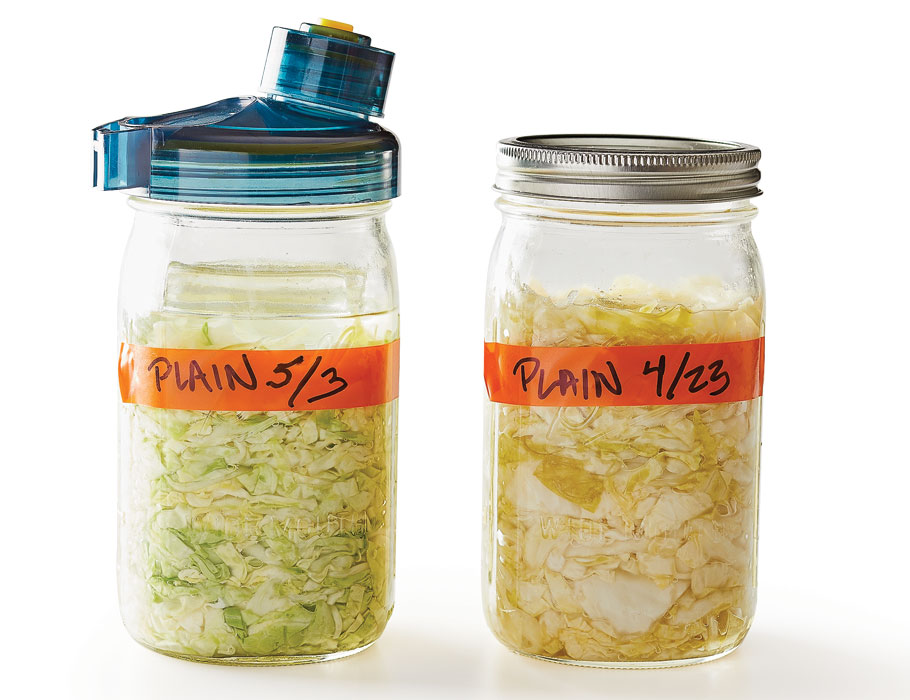 Start tasting your fermented cabbage (kraut) at day 10. It's ready when: it’s somewhat translucent and the color of cooked cabbage (more yellow than green), smells sour, is firm to soft in texture, but not slimy or mushy, and tastes pleasingly sour and pickly, but not acidic like vinegar. (It can take as long as 30 days.) Carefully skim off any scum or stray bits of floating vegetables from the top. And tamp down the kraut to make sure it's submerged in its brine, then secure the lid, and refrigerate.
Start tasting your fermented cabbage (kraut) at day 10. It's ready when: it’s somewhat translucent and the color of cooked cabbage (more yellow than green), smells sour, is firm to soft in texture, but not slimy or mushy, and tastes pleasingly sour and pickly, but not acidic like vinegar. (It can take as long as 30 days.) Carefully skim off any scum or stray bits of floating vegetables from the top. And tamp down the kraut to make sure it's submerged in its brine, then secure the lid, and refrigerate.
Sauerkraut Recipes
Now, try your hand at fermenting at home with our Basic Sauerkraut recipe, or try the variations for Blaukraut or Hot & Smoky Kraut.
Product Recommendations
Interested in cooking? Need some supplies?
Check out some of the tools we like. All products featured on Cuisine at Home are independently selected by our editors; we may earn an affiliate commission from qualifying purchases through our links.